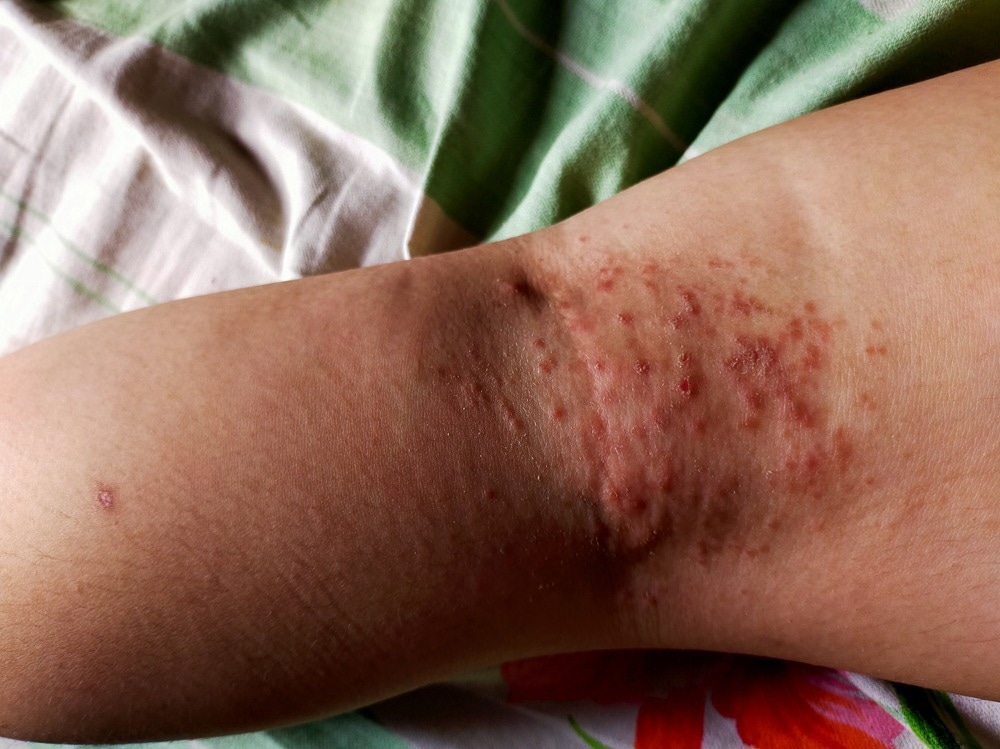Introduction
Pathophysiology of bacterial skin infections
Primary bacterial skin infections
Secondary bacterial skin infections
References
Bacterial skin infections (also known as pyodermas) can be caused by a wide array of bacteria – most commonly by either staphylococci or streptococci, or sometimes by both organisms. Less common bacteria may also play a role in hospitalized individuals, those living in a nursing home, or during certain activities such as gardening or swimming in a pond or ocean.
In most cases, there are distinct morphological characteristics that enable clinicians to recognize potentially treatable and reversible conditions. Accordingly, most cutaneous infections cause edema, erythema, or other signs of inflammation but can also give rise to focal accumulation of pus or fluid (such as furuncles and vesicles, respectively).
Clinical examination and, in some instances, microbiological staining and culturing of pus or exudate are usually adequate for establishing a diagnosis. When antibiotic treatment is necessary, drugs active against gram-positive microorganisms (such as second-generation penicillins, cephalosporins, and fluoroquinolones) should be considered as a therapy of choice, and susceptibility testing of a putative isolate should be pursued as resistance is on the rise.

Image Credit: clariesa/Shutterstock.com
Pathophysiology of bacterial skin infections
Even though many different bacterial species come in contact or may be resident on the skin, it is considered a very efficient barrier against invasion and subsequent bacterial infections. Most common conditions that can predispose an individual to bacterial skin infections involve cases when the integrity of the skin barrier is breached; therefore, trauma such as abrasion, excoriation, laceration, or ulceration may result in vulnerable skin.
Furthermore, certain groups have a heightened risk of developing cutaneous infections. Diabetic patients usually have poor blood flow (especially to the hands and feet), while high glucose levels in their blood substantially decrease their leukocytes' propensity to fight infections. In addition, elderly patients, those with HIV/AIDS, or those on chemotherapy are also at particular risk due to a weakened immune system.
Primary bacterial skin infections
A single organism usually initiates primary skin bacterial infections, most often occurring in normal skin and manifesting with characteristic course and morphology. The most frequent pathogens associated with this type of infection are Streptococcus pyogenes, Staphylococcus aureus, and sometimes coryneform bacteria. Some of the common examples are impetigo, folliculitis, and erythrasma.
Impetigo is a superficial and intraepidermal bacterial skin infection most commonly observed in children during humid summer months. A dominant form of the disease is a non-bullous type that presents with one sore (erosion) or a cluster on exposed skin areas. Impetigo first appears in the form of small vesicles or pustules that rupture and form a thick adherent honey-yellow crust.
Folliculitis represents an inflammation of the hair follicles due to infection (but can also arise due to chemical irritation or physical injury). The superficial type of folliculitis caused by Staphylococcus aureus manifests as a painless or tender pustule that usually heals without scarring. The infection spreads further into the follicle in deep folliculitis, while a furuncle (or boil) involves subcutaneous tissue.
Erythrasma is caused by a non-spore-forming gram-positive microorganism Corynebacterium minutissimum, which (under conditions of occlusion or moisture) proliferates and causes a superficial infection of the skin and, most notably, intertriginous areas. Lesions are in the form of patches that are initially pink and dry and later turn brown.

Image Credit: Tatiana Shepeleva/Shutterstock.com
Secondary bacterial skin infections
The moist and damaged skin provides an opportunistic environment for different bacterial species to thrive and cause secondary cutaneous infections (often as a superimposed condition). Some of the common examples are intertrigo and toe web infections. In addition, various systemic infections can also have skin manifestations.
Intertrigo is a chronic skin disorder with insidious onset of stinging and burning sensations in skin folds, accompanied by pruritus (or itching). This secondary bacterial skin infection, most commonly observed in patients with obesity and those who are bedridden, is caused by an overgrowth of either transient or resident bacterial flora.
Toe web infections (also known as athlete's foot) used to be regarded as strictly fungal infections; nevertheless, it is now known that the fungi can create an environment suitable for overgrowth of Brevibacterium species and certain corynebacteria. Proteolytic enzymes that are secreted by some of these bacteria can aggravate this problem even more.
References:
- Ferringer T. Common Bacterial Infections. In: Hall JC, Hall BJ, editors. Skin Infections – Diagnosis and Treatment. Cambridge University Press, USA, 2009; pp. 17-22.
- Aly, R. (1996) "Microbial Infections of Skin and Nails", University of Texas Medical Branch at Galveston, p. Available at: https://www.ncbi.nlm.nih.gov/books/NBK8301/ (Accessed: 4 August 2022).
- STULBERG, D., PENROD, M. and BLATNY, R. (2002) "Common Bacterial Skin Infections", American Family Physician, 66(1), pp. 119-125. Available at: https://www.aafp.org/pubs/afp/issues/2002/0701/p119.html (Accessed: 4 August 2022).
- KALRA, M., HIGGINS, K. and KINNEY, B. (2014) "Intertrigo and Secondary Skin Infections", American Family Physician, 89(7), pp. 569-573. Available at: https://www.aafp.org/pubs/afp/issues/2014/0401/p569.html (Accessed: 4 August 2022).
- Ni Riain, U. (2011). Recommended management of common bacterial skin infections. Prescriber, 22(15-16), pp.14–24. doi:10.1002/psb.783.
Further Reading
Last Updated: Aug 10, 2022